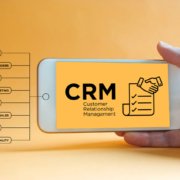Senior Living Marketing Perspectives: The Science of Conversions and Optimization with Brian Massey
Topics Discussed and Key Points:
- Looking at the science of conversion and not just the art
- Using behavioral science to understand the thought process of prospects
- What data we should be looking at that informs strategic conversations with prospects
- Tools to help track engagement metrics
- Updating your website and communication tools to adapt to social distancing limitations
- Designing a website that gradually educates cold prospects to warm them up over time
- Creating content and designing web pages for different segments
- Designing your website as a draftsman rather than as an artist
- Optimizing your website for the mobile experience
Episode Summary:
In today’s episode, Debbie speaks with Brian Massey, Managing Partner at Conversion Sciences, a data-driven conversion optimization agency which seeks to “find those impulses to act that are hidden in your site.”
If you are counting on the internet to drive your business, you cannot manage it without having access to behavioral data. Brian says that his role is not just the scientific complement to the art of marketing, but one that allows the marketer to “expand their art to be more creative”.
Most businesses today do not need more leads, but more conversion. If they are aware of the data indicating the number of visitors, conversions, and the bounce rate (many companies do not even track these numbers), the first step is to look at the primary call to action that you want a particular page to make. Look at the amount of leads you are driving and how many engagements you are getting. Understanding the data helps you manage your relationship with visitors intelligently.
Bounce rate is a great measure of the quality of the traffic on your website. There is a constant tension between getting more traffic and making the landing experiences better, and there is not necessarily a correlation between the two. Troubleshooting the experience to get more conversions requires an analysis of the visitor’s behavior as they navigate your site or landing page.
Your website should always be updated to adapt to changes in the market. On the most practical level, this means looking at engagement metrics not just to know that data, but to know how to take action based on those changes.
Conversion optimization is “an assembling of segments”, starting with the largest segment in the early stages of your business. Personas are a great tool for understanding what those segments are so that you can keep track of the types of visitors on your website. As you scale and become more sophisticated with your site, you can have more offers targeted toward specific segments. In the senior living space, some of those segments could include the adult children, seniors who would rather live in their home, and seniors who prefer a community.
You should have a variety of content that caters to these different segments, and have pages on your website specially designed for these different kinds of content. Analytics will show how different segments behave differently on the pages you designed specifically for them.
Links:











